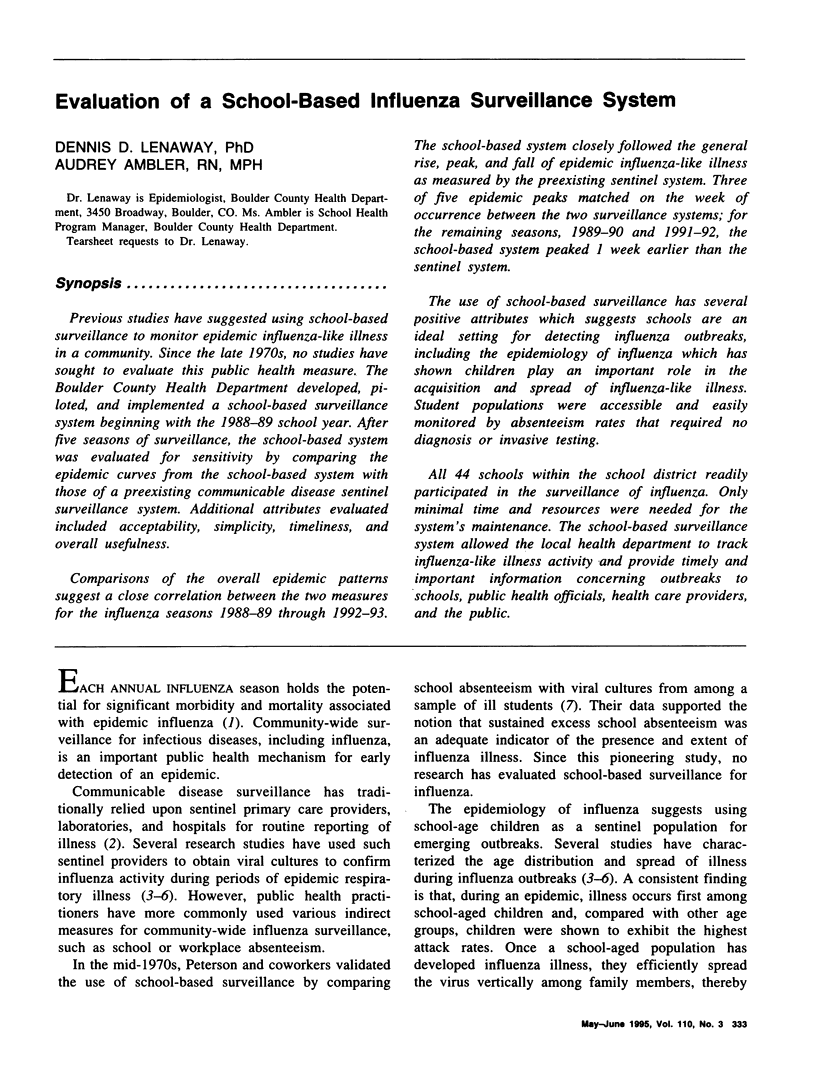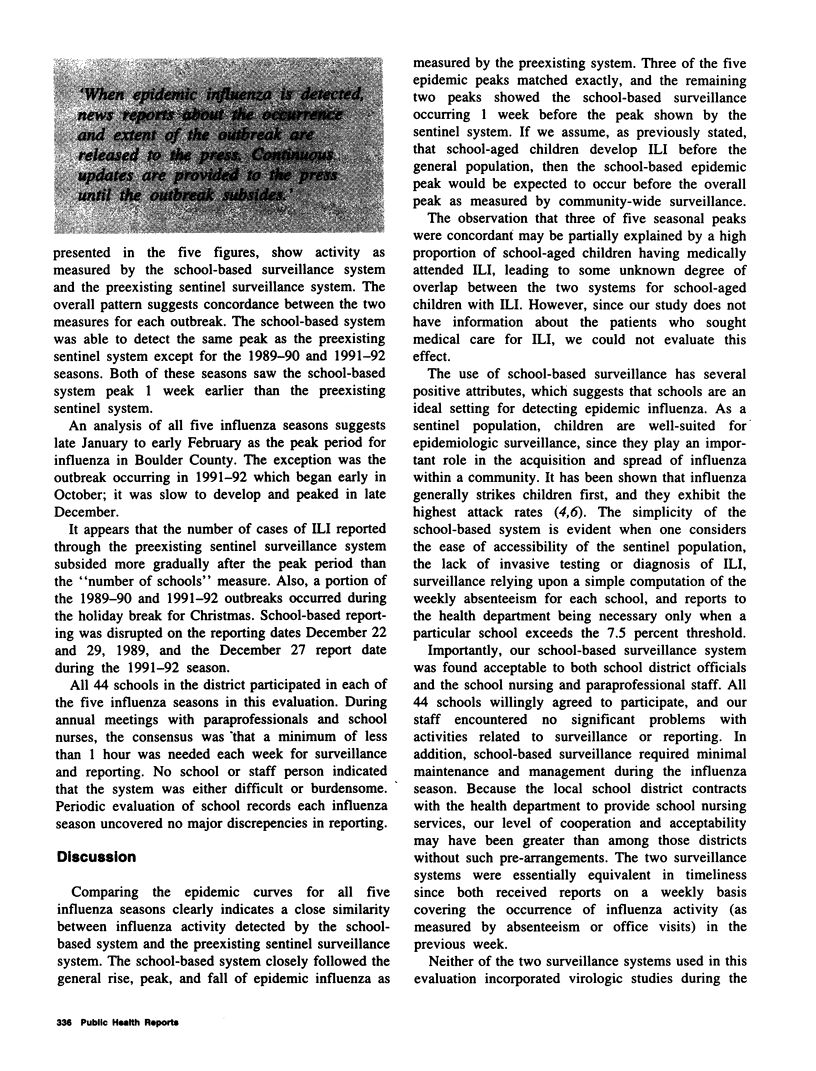Abstract
Previous studies have suggested using school-based surveillance to monitor epidemic influenza-like illness in a community. Since the late 1970s, no studies have sought to evaluate this public health measure. The Boulder County Health Department developed, piloted, and implemented a school-based surveillance system beginning with the 1988-89 school year. After five seasons of surveillance, the school-based system was evaluated for sensitivity by comparing the epidemic curves from the school-based system with those of a preexisting communicable disease sentinel surveillance system. Additional attributes evaluated included acceptability, simplicity, timeliness, and overall usefulness. Comparisons of the overall epidemic patterns suggest a close correlation between the two measures for the influenza seasons 1988-89 through 1992-93. The school-based system closely followed the general rise, peak, and fall of epidemic influenza-like illness as measured by the preexisting sentinel system. Three of five epidemic peaks matched on the week of occurrence between the two surveillance systems; for the remaining seasons, 1989-90 and 1991-92, the school-based system peaked 1 week earlier than the sentinel system. The use of school-based surveillance has several positive attributes which suggests schools are an ideal setting for detecting influenza outbreaks, including the epidemiology of influenza which has shown children play an important role in the acquisition and spread of influenza-like illness. Student populations were accessible and easily monitored by absenteeism rates that required no diagnosis or invasive testing. All 44 schools within the school district readily participated in the surveillance of influenza.(ABSTRACT TRUNCATED AT 250 WORDS)
Full text
PDF




Selected References
These references are in PubMed. This may not be the complete list of references from this article.
- Couch R. B., Kasel J. A., Glezen W. P., Cate T. R., Six H. R., Taber L. H., Frank A. L., Greenberg S. B., Zahradnik J. M., Keitel W. A. Influenza: its control in persons and populations. J Infect Dis. 1986 Mar;153(3):431–440. doi: 10.1093/infdis/153.3.431. [DOI] [PubMed] [Google Scholar]
- Foy H. M., Hall C., Cooney M. K., Allan I., Fox J. P. Influenza surveillance by age and target group. Am J Epidemiol. 1979 May;109(5):582–587. doi: 10.1093/oxfordjournals.aje.a112716. [DOI] [PubMed] [Google Scholar]
- Frank A. L., Taber L. H., Glezen W. P., Geyer E. A., McIlwain S., Paredes A. Influenza B virus infections in the community and the family. The epidemics of 1976-1977 and 1979-1980 in Houston, Texas. Am J Epidemiol. 1983 Sep;118(3):313–325. doi: 10.1093/oxfordjournals.aje.a113638. [DOI] [PubMed] [Google Scholar]
- Glezen W. P., Couch R. B. Interpandemic influenza in the Houston area, 1974-76. N Engl J Med. 1978 Mar 16;298(11):587–592. doi: 10.1056/NEJM197803162981103. [DOI] [PubMed] [Google Scholar]
- Glezen W. P. Serious morbidity and mortality associated with influenza epidemics. Epidemiol Rev. 1982;4:25–44. doi: 10.1093/oxfordjournals.epirev.a036250. [DOI] [PubMed] [Google Scholar]
- Peterson D., Andrews J. S., Jr, Levy B. S., Mitchell B. An effective school-based influenza surveillance system. Public Health Rep. 1979 Jan-Feb;94(1):88–92. [PMC free article] [PubMed] [Google Scholar]
- Thacker S. B., Berkelman R. L. Public health surveillance in the United States. Epidemiol Rev. 1988;10:164–190. doi: 10.1093/oxfordjournals.epirev.a036021. [DOI] [PubMed] [Google Scholar]


